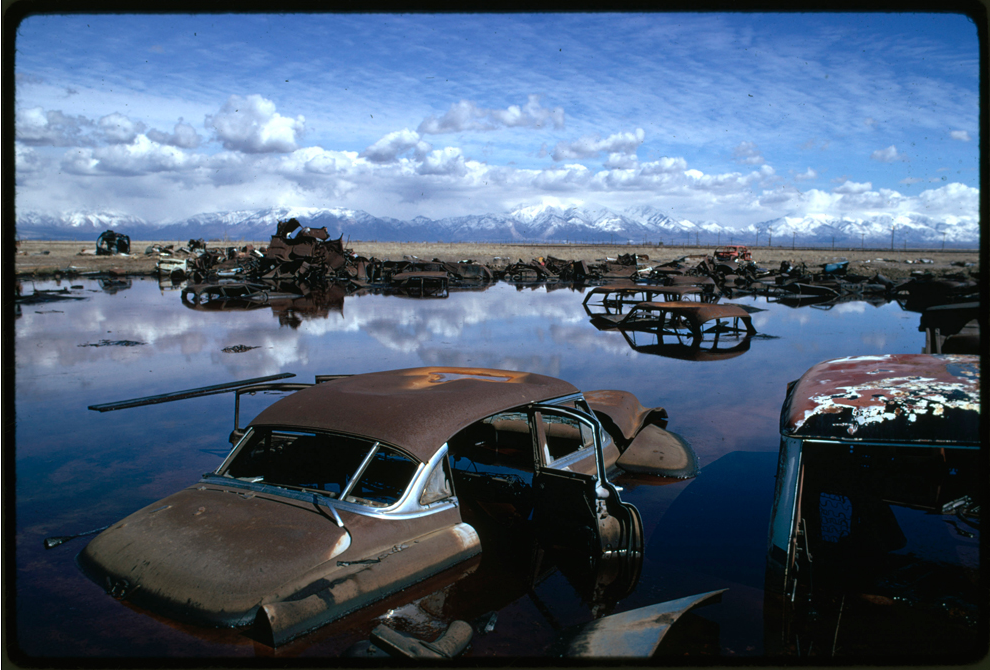Underlying the debate over sequestration is the question of whether or not we should have “big government.” By some accounts big government does very little for us and we would be better served by allowing smaller, local governments to regulate and address our collective needs. Those who make this argument, such as, say, the Governors of Texas and Louisiana, miss the irony of seeking and accepting federal aid in the wake of disasters of one sort or another, but the photograph above makes a somewhat different point.
I came across the above image as part of an exhibit that is about to go on display at the National Archives (March 8-September 8, 2013) and which recalls “Documerica.” Sponsored by the EPA in the 1970s, Documerica was modeled after Roy Stryker’s 1930s “photography unit,” which was housed in the New Deal’s Farm Security Administration (FSA) and charged with the task of photographing the effects of the depression on rural America. The FSA photographs were shot mostly in black and white and the results are considered to be one of the treasures of American documentary photography—the vast archive of 170,000 negatives are now housed in the Library of Congress. The EPA images are in vibrant color rather than black and white, and so they contrast with most of the work of the FSA photographers, but they too are an important historical resource as they stand in as a visual reminder of the state of the U.S. environment at the point at which the country was first becoming conscious of the effects of consumer and industrial waste on the national ecology.
This photograph foregrounds abandoned automobiles and other rubbish rusting in a five acre pond filled with acid water and oil. In the background we see the big sky blend into a majestic mountain range. The contrast between dark and light which distinguishes the foreground and the background is too pronounced to ignore, and framed as a landscape it is clear that while the mountains are too far away to identify in any exact way, they are nevertheless close enough to know that the distance can be traversed without too much trouble. Nature and culture are in disharmony, and it is clear where the threat resides. The photograph was shot near Ogden, Utah in April of 1974, and the pond is close enough to both the Great Salt Lake and a wildlife refuge that, if left unattended, it would have contaminated both in relatively short order. As luck would have it, the EPA interceded and supervised its clean up. But of course it had nothing to do with “luck”! It had to do with a big government agency attending to matters with a landscape eye’s view of the common good—seeing, as it were, not just the trees but the forest.
Big government might not always be the best way to handle all domestic social and political issues, but to argue against it as a simple matter of principle would leave us with little more than the image above. And that would surely be a tragedy … in the long run, if not sooner.
Credit: Bruce McAllister/National Archives/Records of the EPA

Discussion